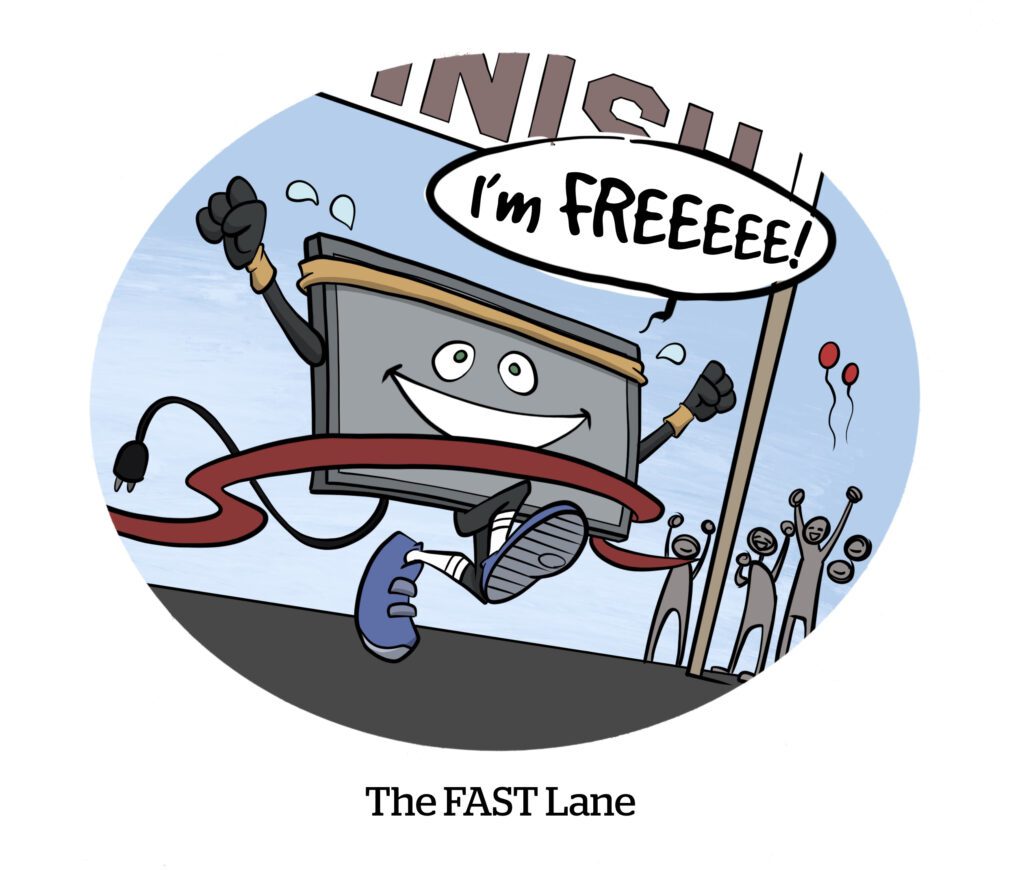Welcome to the 30th (!) edition of AdExchanger’s connected TV roundup, where we’ll dive into a topic that has been making headlines since this newsletter was born: FAST channels.
Streaming services have been using free, ad-supported TV (FAST) as a way to reach viewers who don’t want to pay for TV. But here’s another reason streamers are all about FAST right now: It’s an onramp to bring more viewers into ad-supported video-on-demand (AVOD) environments.
And what’s good about AVOD? More ad revenue – and potentially more paid subscriptions – for streamers.
Last month, Warner Bros. Discovery (WBD) and NBCUniversal announced new FAST channels on Amazon’s AVOD platform Freevee.
And smaller programmers are following suit. Last week, Chicken Soup for the Soul Entertainment (yes, it has a streaming service) and Common Sense Networks, which runs kids programming, announced new FAST channel distributions on the same day.
So, what’s with all this FAST love?
Get with the program
Although the industry makes a lot of noise about using FAST channels to capture viewership from people who won’t pay for TV, its potential goes beyond just reach.
Because FAST runs on program schedules, it’s a bit like streaming dressed up as linear TV. If people get sucked into the shows they stumble upon, they might consider watching them on AVOD.
That’s why Fox-owned Tubi, which started out as AVOD, created FAST channels of its own. Viewers that get hooked on Tubi’s FAST content will switch to AVOD to rewind or restart an episode they want to watch in full – or so the thinking goes.
Tubi’s plan to attract more on-demand viewing appears to be working. In June, its viewership surpassed that of Peacock, Paramount+ and The Roku Channel, according to Nielsen’s latest Gauge report. (Tubi now commands 1.4% of streaming hours, up from 1% in March.)
Amazon, meanwhile, is also focusing on FAST to help attract more AVOD viewership, Ryan Pirozzi, who heads the Freevee business, told me during Amazon’s NewFront in May, where the company announced a new FAST channel hub on Fire TV.
In Amazon’s case, if viewers find content they like via FAST on the Fire TV home screen, the likelihood increases that they’ll turn to Prime Video for full titles on-demand. And since Prime is a paid service, Amazon would also get more revenue from Prime rentals and/or subscriptions in addition to ad revenue.
Sharing is monetizing
But where is all this FAST content coming from?
For many programmers, FAST is a good way to increase monetization of content by licensing it to content distributors. Amazon’s Freevee and The Roku Channel are among the more popular destinations. For example, Amazon’s FAST channels include licensed content from other major media companies, such as WBD and NBCU.
In addition to FAST channels on Freevee, NBCU has channels on Comcast’s free streaming service, Xumo, and Common Sense Networks has new kid-friendly FAST channels on Roku, Vizio, Dish-owned Sling and TCL (which was the go-to manufacturer for Roku TVs before Roku started making its own).
Programmers typically gatekeep the rights to their IP to make sure they’re fully monetizing their content.
But when content can attract fresh viewership for AVOD – and generate more ad revenue as a result – many publishers are putting aside their possessiveness in favor of FAST.
Are you enjoying this newsletter? Let me know what you think. Hit me up at alyssa@adexchanger.com.













